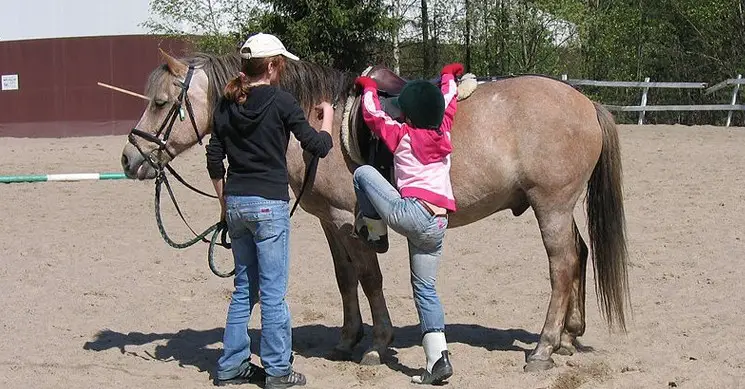Have you ever wondered why you mount a horse on the left side? This is one of those things that does not require a concrete answer as to why it happens. You might say, “Well, that’s how I was taught,” or “it’s the way things are done.” However, this does not eliminate your curiosity.
People have been mounting horses from the left side for a long time, and it has proven to be successful. Sometimes you may see someone trying to mount a horse from the right side and it causes a bit of commotion. This is because most horses today are trained to only accept mounting from the left side. Thus if you try mounting from elsewhere, you may spook them.
Luckily for you, we also had that burning question in mind, and decided to take it a step further to conduct the necessary research to come up with concrete answers. We know that most people you meet in your daily life may not be the most knowledgeable about horses, so we saved you the time and hassle of looking for answers, a futile exercise in most situations.
Here are four reasons why horses are mounted on the left side and what would happen if you mounted them on the right side.

1. It Dates Back to Ancient Europe
Back in the days of knights and horseback warriors, gentlemen used to wear a sheath on their left hip. Most people are right-handed according to history. It made sense to have the sword on the left, so it would be easy to draw the blade with the right hand from up the horse.
Trying to mount on the right would get the rider tangled up with his sword. The blade would end up poking the horse – not a good start when preparing for war.
The rider had to use his right hand for writing, roping, and opening gates even if he wasn’t wearing a sheath. As such, the left hand had to contain the reins. That’s why mounting on the left was crucial.
If a rider was to mount on the right, it meant he’d have to switch the reins from the right hand to the left one. This means the rider would have to momentarily lose control of the horse, which is usually when the animal acts up.
2. It’s the Near Side
Early horse trainers noticed that horses preferred when people worked and approached them from the left side. Research shows that the animal’s left eye responds quicker and more strongly to stimuli than the right eye. Horses also like to keep humans in their line of sight, so trainers use the left side to enhance it. Therefore, trainers started referring to the left side as the near side and the right as the offside.
3. For Tack Up
Everything that you do that involves approaching a horse, you do on the left side. For example, we buckle most horse equipment on the animal’s left side. This includes breast collars, cinches, throat latches, and bridles. This process makes it easier to tack up and mount the horse without moving around too much. The same goes for removing tack and dismounting.
4. For Safety
Horses have minimal communication between the right and left hemispheres of the brain. Their bodies don’t register experiences from different sides; hence, trainers teach horses to allow mounting on the left such that if you were to mount them on the right, it would be like the first time anyone is getting on. Therefore, if the horse does not trust the rider, it can break into fits that will injure the rider. As such, trainers maintain safety and consistency by training horses to allow mounting and dismounting on the left side.
What About Mounting a Horse from Either Side?
Although we usually mount horses from the left side, it puts a lot of pressure on their withers on the right side. This can cause a sore back. Mounting consistently on the left can cause the muscles on the other side of the body to develop differently. As a result, some trainers are ditching the left-side-only approach instead of training horses to accept riders from either side. This approach may come in handy when mounting on the left is impossible or dangerous.
Conclusion
Mounting a horse on the left is a European tradition that has stuck to date. However, it is a good idea to train horses to accept mounting from either side of the body. And as always, be gentle and always prepare the horse for a smooth ride.
